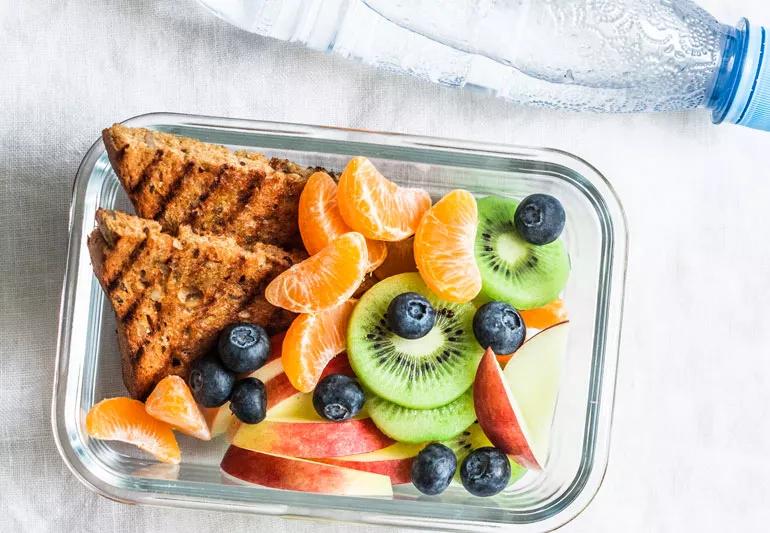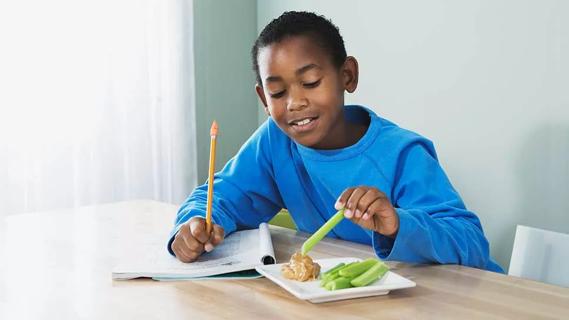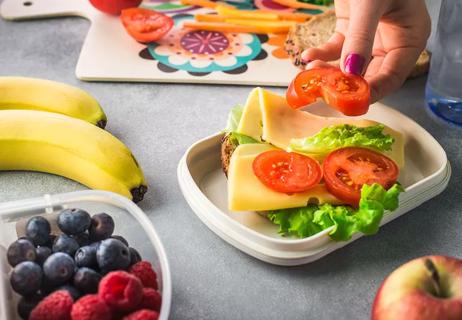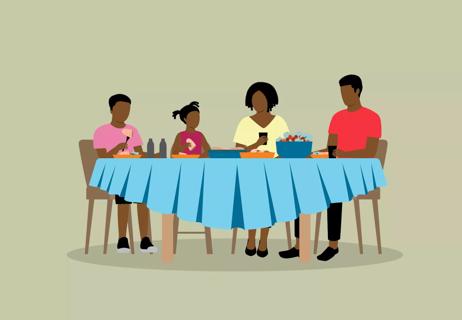Skip the hours of prep time — Mother Earth has done most of it for you

They say, “Be wary of the middle aisles of the grocery store.” Who is the mysterious “they?” And what happens in the middle?
Advertisement
Cleveland Clinic is a non-profit academic medical center. Advertising on our site helps support our mission. We do not endorse non-Cleveland Clinic products or services. Policy
“They” are dietitians and health professionals who know processed foods dwell in the middle aisles (usually at eye-level). “Processed foods often have few health benefits and are often full of additives and sugar,” says pediatric dietitian Jennifer Hyland, RD.
“Parents may reach for them because they’re convenient to serve — but there are plenty of healthy finger foods out there. You just have to know where to look.”
Processed foods are, not surprisingly, packaged in a way that entices kids — lots of colors and cute characters. Hyland says some boxed foods are perfectly appropriate, but not if the ingredient list is extremely lengthy and you can’t make out what many of the words mean.
Instead, choose packaged items with the fewest ingredients, such as tortilla chips made from corn, olive oil and salt. These are typically less processed.
Perishable foods requiring minimal effort are your best choice. If necessary, you can pair them with lightly processed foods for a healthier-than-the-drive-thru snack.
Try these combos:
Advertisement
Take advantage of these dairy or healthy fat options:
“You can have a lot of fun cooking with the kids to make your own grain-based snacks,” says Hyland. “It takes a little more effort, but if you make a batch and throw them in the freezer, they’ll be easy to grab and will thaw on the go.”
She recommends:
Healthy proteins are other easy options when you make them ahead of time. Try:
Keep choking hazards in mind when selecting finger foods. “A child’s windpipe is about the size of their pinky finger. Cut food length wise so it’s thin enough to pass easily,” says Hyland. “For the youngest kids, peel and cook fruits and veggies so you can mash them with a fork or your child can easily gum them.”
The U.S. Centers for Disease Control recommends avoiding these foods for younger children:
• Raw vegetables like carrot sticks.
• Whole nuts.
• Whole grapes or cherry tomatoes.
• Popcorn or chips.
• Meats that are tough to chew.
Advertisement
Learn more about our editorial process.
Advertisement

Most kids get enough protein in a regular diet — too much can have side effects

Look for snacks that are low in sugar and high in fiber, protein and healthy fats

Kids typically get all the nutrients they need from food, but supplements can add peace of mind

The five major food groups offer different types of nutrients in the right proportions

Be a good role model, set family meal times and involve your kids in meal planning

How to keep kids' diets healthy while the sun heats things up

Fiber can lower blood pressure and promote healthy bowel function

Many active children don’t consume the recommended amounts

Babies can get congested easily, but you can calm their cough by keeping them hydrated, using nasal drops and running a humidifier

Weight loss may cause loose, sagging skin and muscle loss to your rear

Several conditions, like vitiligo and fungal infection, can cause a loss of pigmentation, leading to white spots or patches on your skin